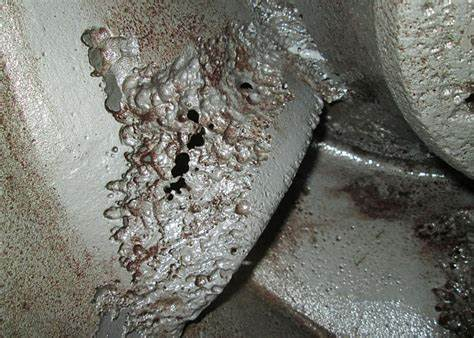+86 13816508465
Pump Knowledge
Apr. 26, 2024
What is Cavitation?
Cavitation is a complex phenomenon that can significantly impact the performance and longevity of pumps. It occurs when the net positive suction head (NPSH) required by a pump is not met by the system's lowest available pressure, leading to the formation and subsequent collapse of vapor bubbles within the pump. This process can cause rapid deterioration in a pump's performance curve, affect the impeller's lifespan, and prevent the pump from delivering the expected flow rate and head.

How Cavitation Forms?
Cavitation typically takes place at the outer edges of impeller blades and covers, as well as within the volute casing or diffuser. It is not common at the impeller inlet. The formation of cavitation is triggered when the installation height of the pump increases, causing a drop in internal pump pressure. The lowest pressure point is usually located just after the impeller blade inlet.
Quoted from IET Institute for Energy Technology's YouTube video
Factors Influencing Cavitation
· Pump's NPSH: A dynamic value that changes with different pumps and flow rates.
· Atmospheric Pressure: Varies with altitude; lower in high-altitude cities.
· Installation Height Difference: The height difference between the pump and the water surface.
· Pressure Drop at the Inlet: Resulting from pipeline friction and local resistance.
· Saturation Vapor Pressure: Increases with higher water temperatures.
Solutions to Cavitation
1. Select a pump with low NPSH

2. Lower Installation Height: Reduce the pump's height to increase inlet pressure.
3. Booster Pump: Install a booster pump to improve suction conditions.
4. Inducer Wheel: Add an inducer wheel to enhance inlet flow.
5. Outlet Flow Reduction: Decrease the pump's outlet flow if inlet pressure is insufficient.
6. Recirculation System: Install a recirculation system to stabilize flow.
Preventing Cavitation
1. Installation Height: Reasonably plan the pump's installation height to avoid cavitation.
2. Double-Suction Impellers: Use these to reduce flow velocity through the impeller.
3. Density Consideration: Be mindful of pumping denser liquids as they require lower suction heights.
4. Vapor Pressure Awareness: Account for the vapor pressure of the liquid being pumped, especially with volatile liquids.
5. Material Selection: Use materials that are resistant to cavitation damage in the pump's flow parts and consider reducing pump speed.
Conclusion
Understanding cavitation and its causes is crucial for maintaining pump efficiency and preventing damage. By considering the factors that influence cavitation and applying the appropriate preventative measures, we can optimize the pump systems for a reliable and long-lasting performance.
Address
No.17 XeDa Jimei Ind. Park, Xiqing Economic Development Area, Tianjin, China
Telephone
+86 13816508465
QUICK LINKS